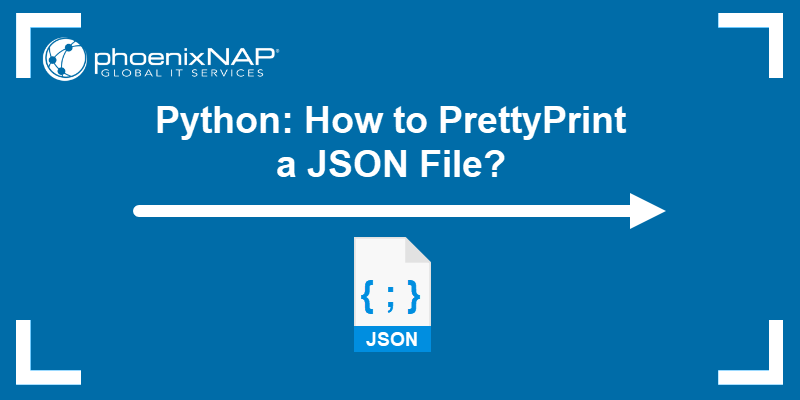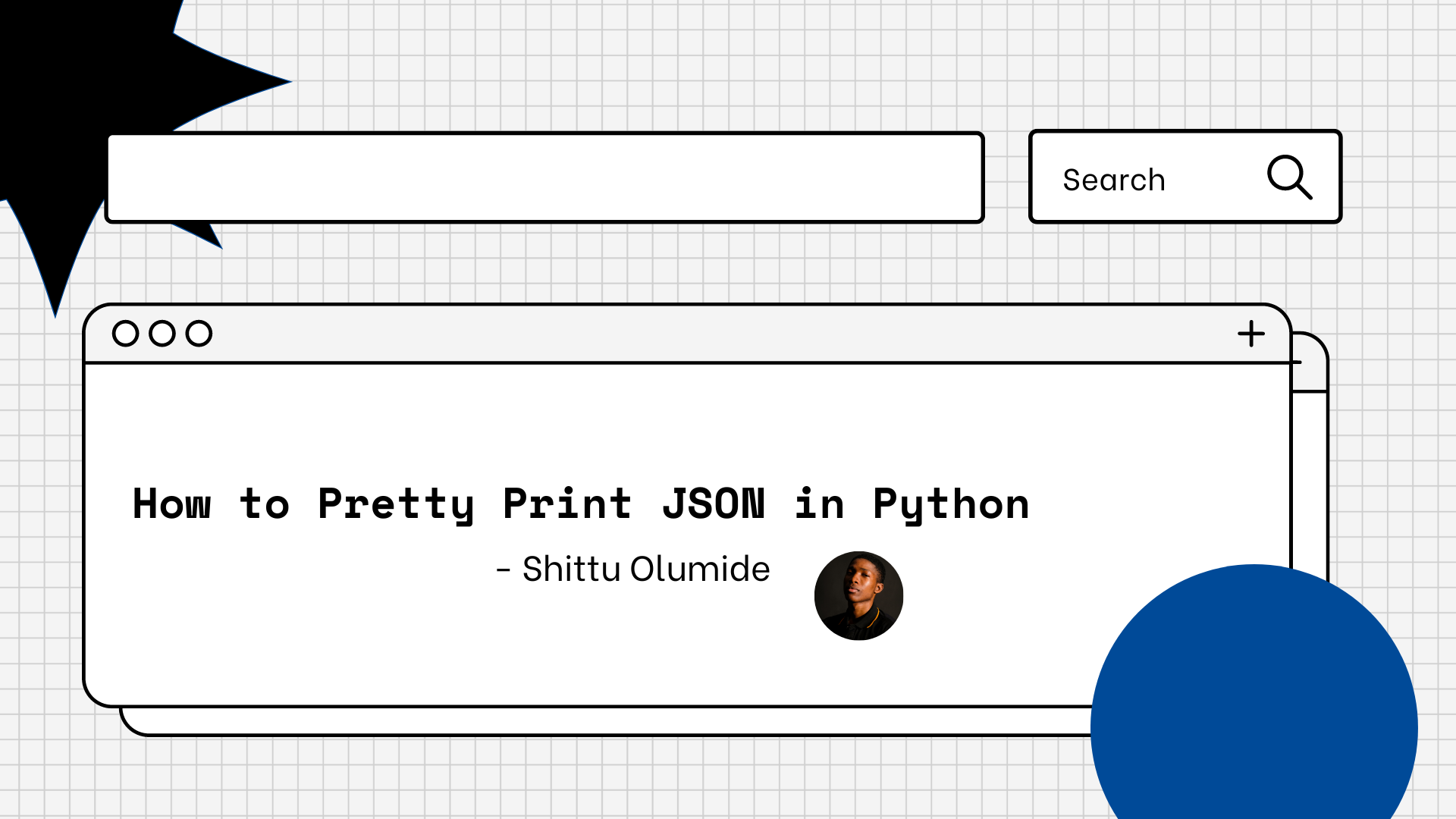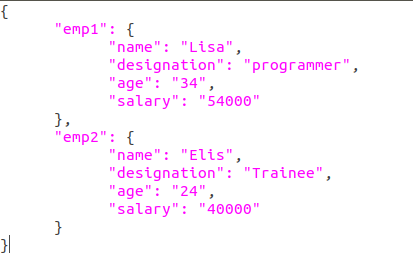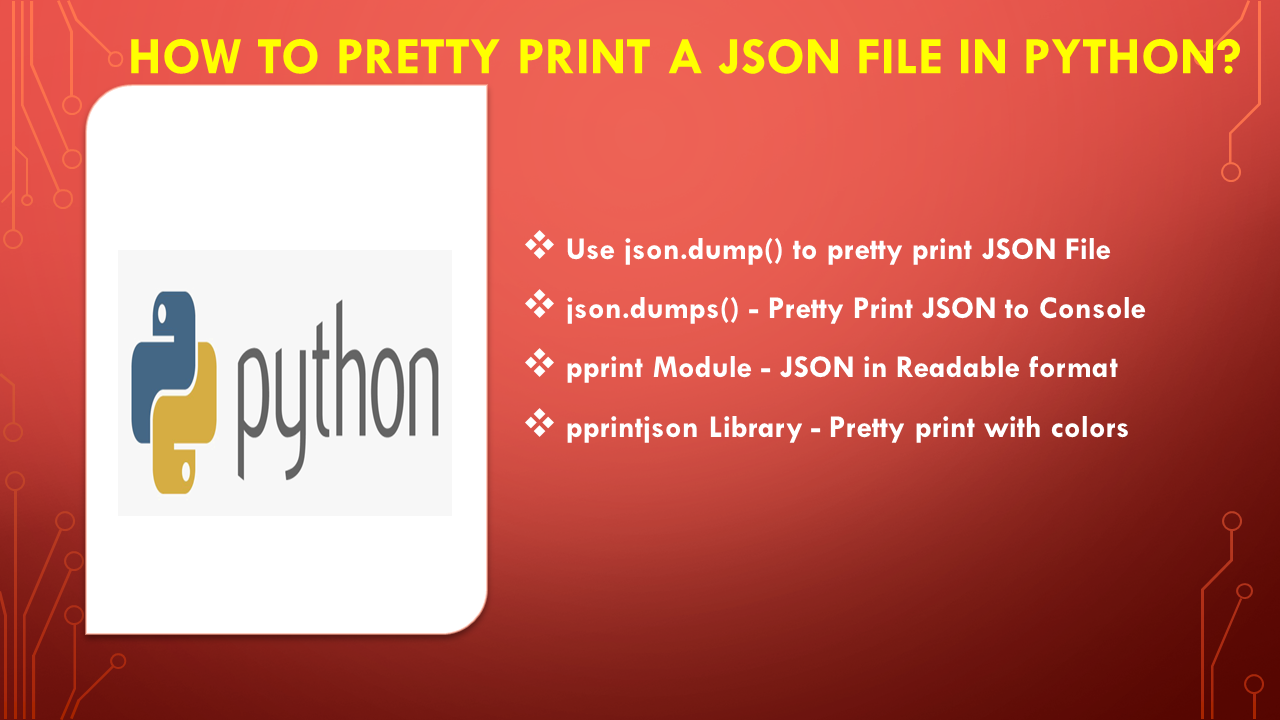Python Pretty Print JSON: A Step-by-Step Guide
Learn different ways to pretty print JSON files in Python for improved readability and easier debugging.
Learn different ways to pretty print JSON files in Python for improved readability and easier debugging.
Working with JSON data in Python is made easy with the json module. This module provides a way to convert JSON data into Python objects and vice versa. One common task is to pretty-print JSON data to make it more readable.
First, import the json module. This module provides functions for working with JSON data.
Let's say you have a JSON string like this: '["foo", {"bar": ["baz", null, 1.0, 2]}]'.
To pretty-print this JSON string, you can use the json.dumps() function. This function takes a JSON object and returns a formatted string. To make it pretty-printed, use the indent parameter and set it to the number of spaces you want for each indentation level. For example, indent=4 will indent each level by 4 spaces.
import json
your_json = '["foo", {"bar": ["baz", null, 1.0, 2]}]'
pretty_json = json.dumps(your_json, indent=4)
print(pretty_json)This will print the JSON data in a more readable format with each level indented:
[
"foo",
{
"bar": [
"baz",
null,
1.0,
2
]
}
]If you have JSON data in a file, you can read the file, parse the JSON data using json.load(), and then use json.dump() to write the pretty-printed JSON back to a file.
import json
with open('your_file.json', 'r') as f:
data = json.load(f)
with open('your_file.json', 'w') as f:
json.dump(data, f, indent=4)This will open the file your_file.json, read the JSON data, pretty-print it with an indent of 4 spaces, and then write the formatted JSON back to the same file.
This Python code demonstrates how to pretty-print JSON data. It takes a JSON string and a JSON file as examples, parses them, and then prints the formatted JSON with an indent of 4 spaces for better readability. The code includes error handling for when the specified JSON file is not found.
import json
# Example with a JSON string
json_string = '["foo", {"bar": ["baz", null, 1.0, 2]}]'
# Pretty-print the JSON string
pretty_json_string = json.dumps(json.loads(json_string), indent=4)
print("Pretty-printed JSON String:")
print(pretty_json_string)
# Example with a JSON file
try:
with open('your_file.json', 'r') as f:
data = json.load(f)
with open('your_file.json', 'w') as f:
json.dump(data, f, indent=4)
print("\n'your_file.json' has been pretty-printed.")
except FileNotFoundError:
print("\n'your_file.json' not found. Create the file and add JSON data to test this part.")Explanation:
Import json Module:
import json imports the necessary module for working with JSON data.JSON String Example:
json_string stores a sample JSON string.json.loads(json_string) converts the JSON string into a Python object.json.dumps() formats the Python object back into a JSON string with an indent of 4 spaces.JSON File Example:
with open(...) to open the file your_file.json for reading ('r') and writing ('w'). This ensures the file is automatically closed even if errors occur.json.load(f) reads the JSON data from the file and parses it into a Python object (data).json.dump(data, f, indent=4) writes the data object back to the file as JSON, using an indent of 4 spaces for pretty-printing.try...except FileNotFoundError block is used to handle the case where your_file.json doesn't exist. If the file is not found, a message is printed to the console.This code demonstrates how to pretty-print JSON data, both from a string and from a file, making it more readable for humans.
Here are some additional points to consider when working with the provided code:
Understanding the Code:
json.loads() vs. json.load(): It's important to distinguish between these two functions:
json.loads() is used to parse a JSON string and convert it into a Python object (like a dictionary or list).json.load() is used to read JSON data from a file and convert it into a Python object.json.dumps() vs. json.dump(): Similarly:
json.dumps() takes a Python object and converts it into a formatted JSON string.json.dump() takes a Python object and writes it to a file as JSON data.Indentation: The indent parameter in json.dumps() and json.dump() is key to pretty-printing. It specifies the number of spaces to use for each level of indentation, making the output more readable.
Beyond the Basics:
Sorting Keys: You can use the sort_keys=True parameter with json.dumps() and json.dump() to sort the keys of dictionaries alphabetically in the output. This can be helpful for comparing JSON data.
Custom Separators: For more compact output, you can customize the separators used in the JSON output using the separators parameter in json.dumps() and json.dump(). For example, separators=(',', ':') would use commas and colons with no extra spaces.
Error Handling: When working with files, it's crucial to include error handling (like the try...except FileNotFoundError block) to gracefully handle cases where the file might not exist or is not accessible.
Alternatives to json Module:
pprint Module: While json.dumps() is great for pretty-printing JSON, the pprint (pretty-print) module can also be used to format Python data structures, including those created from JSON, in a more readable way.Real-World Applications:
API Interactions: When working with APIs that return JSON data, pretty-printing can make it much easier to understand the structure and content of the response.
Configuration Files: Pretty-printing is helpful for maintaining human-readable configuration files in JSON format.
Data Visualization: Before visualizing JSON data, pretty-printing can be a useful preprocessing step to make the data easier to work with.
This summary explains how to format JSON data for better readability in Python using the json module.
| Method | Description | Code Example |
|---|---|---|
| Pretty-printing from a string | Use json.dumps() with the indent parameter to format a JSON string. |
python <br> import json <br> your_json = '["foo", {"bar": ["baz", null, 1.0, 2]}]' <br> pretty_json = json.dumps(your_json, indent=4) <br> print(pretty_json) |
| Pretty-printing from and to a file | 1. Read JSON data from a file using json.load(). 2. Write the formatted JSON back to the file using json.dump() with the indent parameter. |
python <br> import json <br> with open('your_file.json', 'r') as f: <br> data = json.load(f) <br> with open('your_file.json', 'w') as f: <br> json.dump(data, f, indent=4) |
The json module in Python provides powerful and convenient functions for working with JSON data, making it easy to parse, format, and handle JSON strings and files. The json.dumps() and json.dump() functions, along with the indent parameter, are particularly useful for pretty-printing JSON data, enhancing its readability for human consumption. This is especially beneficial when dealing with complex JSON structures or when using JSON for configuration files, API interactions, or data visualization tasks. Understanding these basic functionalities provides a solid foundation for effectively working with JSON data in various Python applications.
 How to PrettyPrint a JSON File Using Python? | Learn how you can use Python to PrettyPrint JSON files using three different methods. As a result, the output is easy to read and understand.
How to PrettyPrint a JSON File Using Python? | Learn how you can use Python to PrettyPrint JSON files using three different methods. As a result, the output is easy to read and understand. Python Pretty Print JSON | DigitalOcean | Technical tutorials, Q&A, events — This is an inclusive place where developers can find or lend support and discover new ways to contribute to the community.
Python Pretty Print JSON | DigitalOcean | Technical tutorials, Q&A, events — This is an inclusive place where developers can find or lend support and discover new ways to contribute to the community. How to Pretty Print JSON in Python | By Shittu Olumide JSON (JavaScript Object Notation) is a popular data interchange format that is widely used in web applications, APIs, and databases. It is a lightweight and human-readable format that is easy to parse and generate. But when dealing...
How to Pretty Print JSON in Python | By Shittu Olumide JSON (JavaScript Object Notation) is a popular data interchange format that is widely used in web applications, APIs, and databases. It is a lightweight and human-readable format that is easy to parse and generate. But when dealing... Python PrettyPrint JSON Data | Python Write Indented and Pretty-printed JSON into a file. Prettyprint JSON file and JSON string. Use pprint module to pretty-print JSON. Pretty-print JSON from the command line
Python PrettyPrint JSON Data | Python Write Indented and Pretty-printed JSON into a file. Prettyprint JSON file and JSON string. Use pprint module to pretty-print JSON. Pretty-print JSON from the command line Python - Pretty Print JSON - GeeksforGeeks | A Computer Science portal for geeks. It contains well written, well thought and well explained computer science and programming articles, quizzes and practice/competitive programming/company interview Questions.
Python - Pretty Print JSON - GeeksforGeeks | A Computer Science portal for geeks. It contains well written, well thought and well explained computer science and programming articles, quizzes and practice/competitive programming/company interview Questions. Python JSON Pretty Print | Guide (With Examples) | Ever found yourself wrestling with the task of reading JSON data in Python? You're not alone. Many developers find the task daunting, but Python offers a
Python JSON Pretty Print | Guide (With Examples) | Ever found yourself wrestling with the task of reading JSON data in Python? You're not alone. Many developers find the task daunting, but Python offers a Pretty Print JSON in Python - GeeksforGeeks | A Computer Science portal for geeks. It contains well written, well thought and well explained computer science and programming articles, quizzes and practice/competitive programming/company interview Questions.
Pretty Print JSON in Python - GeeksforGeeks | A Computer Science portal for geeks. It contains well written, well thought and well explained computer science and programming articles, quizzes and practice/competitive programming/company interview Questions. How to Pretty Print a JSON file in Python? - Spark By {Examples} | The dumps() from the json module & pprint() from the pprint module are used to pretty print a JSON file in Python, JSON data is often stored in a
How to Pretty Print a JSON file in Python? - Spark By {Examples} | The dumps() from the json module & pprint() from the pprint module are used to pretty print a JSON file in Python, JSON data is often stored in a